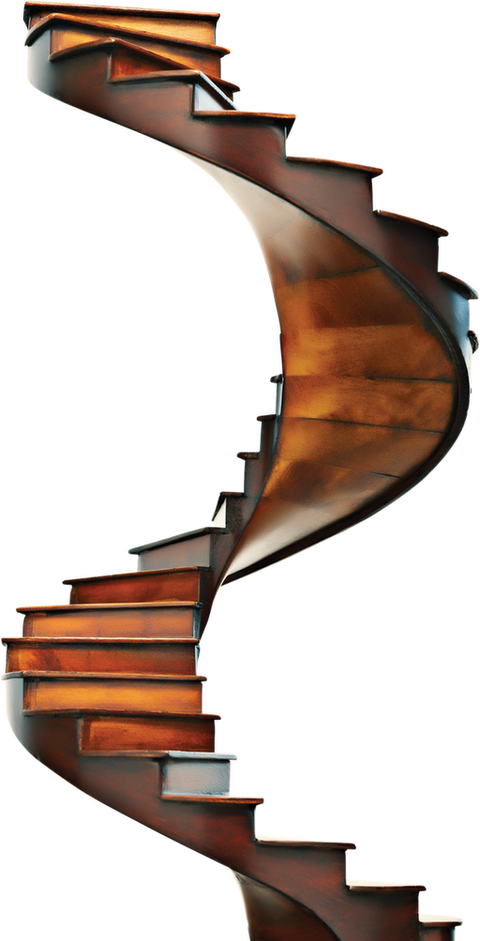
ClimbUp,SlideDown
Sofar,thescrewsyouhavereadaboutspinroundandround.Butsomescrewsdon’tmoveatall.Yettheymakejobseasier―andmore fun!
Haveyoueverseenaspiralstaircase?Itcomesinhandywhenthereisnotalotofspacetospreadoutaflightsofstairs.Aspiralstaircaseisshapedlikeascrew.Now,whatifyoureplacethestairswithasmoothsurface?Youhaveaspiral slide!
A spiralstaircaseisnothingmorethanabig screw!
MoveItAlong
Screwsareamazingmachines.Weusethemtoholdthingstogether,digholesbigandsmall,andsavespace.Butthesesimplemachinesdoanotherveryimportantjob.Theymove things.
Thinkaboutthedrillbitspinningintothewood.Asthebitdrillsthehole,woodshavingsandsawdustcomeoutofthehole.Thesearethetinypiecesofwoodthatthebitremoves.It’slikediggingaholewithashovelandtossingthesoilaroundtheopening.Buthowdoesascrew,likeadrillbit,movethingsthis way?
Asthedrillbitturnsandcarvesoutthewood,thegroovesbetweenthethreadscarrytheremovedpiecesofwoodupalongthe bit.
Thisideathatascrewcouldbeusedtomovethingsledtoanimportantinventionmorethan2,000yearsago.AmathematicianfromancientGreecefiguredouthowtouseascrewtoliftwaterfromarivertoirrigatecrops.HisnamewasArchimedes(sounds like ahr‑kuh-MEE-deez), andtheinventioniscalledanArchimedes’screw.Here’showit worked:
Alargescrewwasfittedinsideatube.Oneendofthetubewasplacedinariver.Aworkerturnedacrankattheotherend.Theturningthreadsofthescrewpushedthewaterupthetubeanddumpeditoutattheotherend.Fromthere,itflowedalongditchestofields.Archimedes’inventionisstillusedtoday.Ascrewisasimplemachine,butourusesforitareanythingbut simple!
Archimedes’ screw